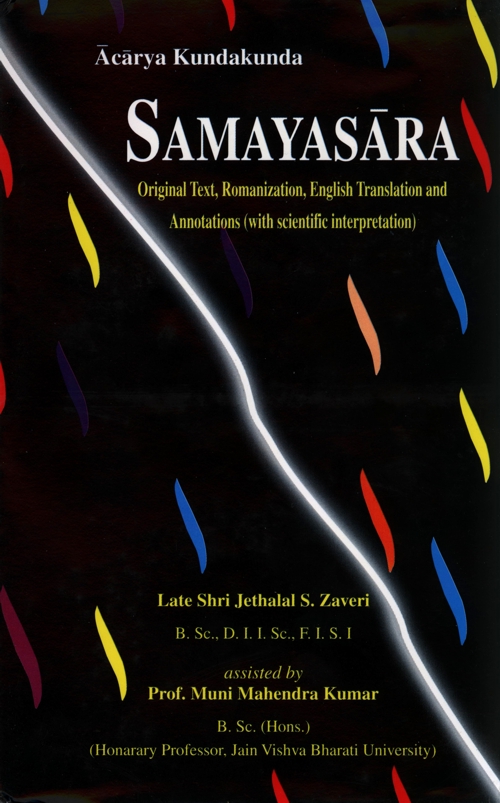
bhūdattheṇābhigadā jīvājīvā ya puṇṇapāvaṃ ca.
āsavasaṃvaraṇijjarabaṃdho mokkho ya sammattaṃ.. 13
(Bhūdattheṇābhigadā) Knowledge which has emerged through ultimate and pure niścaya naya about—(jīvājīvā ya) the animate and the inanimate ( puṇṇa-pāvaṃ ca) auspicious and inauspicious karma (āsava-saṃvara-ṇijjara-baṃdho) influx of karmic matter and its stoppage, bondage [of karma] and its partial eradication, (mokkho ya) and final emancipation—is samyaktva i.e., right faith and right knowledge.
Annotations:
In this verse, Ācārya Kundakunda enumerated nine categories of truth and asserts that the right faith and right knowledge consist in knowing them and their ultimate nature.
The previous verses were a sort of preamble to the subject proper which is being now dealt with. The nine tattvas enumerated in the verse will form the subject of the nine chapters of the book which follow, the first chapter being jīva. Belief in these real existents (tattvas) is the right faith and knowledge of their ultimate nature, without doubt or error, is right knowledge. Since each of them is dealt with at length in the succeeding chapters, here we shall only give a brief description of each.
- Jīva—conscious substance (soul)
- Ajīva—substance which is devoid of consciousness (physical order of existence-matter)
- Puṇya—auspicious karma; its fruition results in enjoyment;
- Pāpa—inauspicious karma its fruition results in suffering;
- Āśrava—psychic tendencies which result in the influx of karmic matter;
- Saṃvara—psychic tendencies which block or inhibit the influx of karmic matter;
- Nirjarā—austere activities which lead to the annihilation of karma and result in partial spiritual purification;
- Bandha—bondage of karmic matter with jīva;
- Mokṣa—final emancipation—total spiritual purification.
These two are the primary tattvas or padārthas (categories of truth) and the rest are derivatives of their interactions-
In the cosmos jīva is situated in an environment of ajīva or inanimate substances of which pudgala or matter is of primary importance. The interaction is mainly between jīva and matter and this is without a beginning. The spiritual advancement consists in progressive purity of jīva from material defilement and culminates in total emancipation-mokṣa. Through the association and separation of the primary elements, the other seven tattvas are derived. The central figure in cosmic drama is jīva.
In the first verse of this chapter it was stated that the spiritual trinity darśana, jñāna and cāritra are the fundamental factors of spiritual advancement. The progress in spiritual journey starts with samyaga darśana which means right world-view and right appreciation of the nine padārthas enumerated above. It is the inherent purity of the soul. It is the enlightenment which eradicates the passions of infinite intensity (anantānubandhī). In fact, their attenuation is the necessary condition of enlightenment. In Buddhism such enlightenment is explained as the firm realization of the transitoriness of things and in Sāṃkhya-yoga it is the distinction between purusa and prakrti. But Jains believe in a philosophy of life that is meant for worldly peace as well as spiritual purity.
Out of the spiritual trinity knowledge (jñāna) and conduct (cāritra) are mostly controlled by our inner propensities (urges and impulses, likes and dislikes and so on) which need purification for functioning in a right manner. And the subjugation and transmutation of the passion and quasi-passions, alone, (which underline our prejudiced and utility oriented knowledge and conduct), would result in the necessary purity. Thus samyag darśana is considered as a sine qua non of the emergence of right knowledge and righ conduct. The power of knowledge (jñāna) and detachment (vairāgya) is possible only on the dawn of samyag darśana; it is also concomitant of the latter, says Amritcandra.[1]
 Jethalal S. Zaveri
Jethalal S. Zaveri
 Prof. Muni Mahendra Kumar
Prof. Muni Mahendra Kumar

